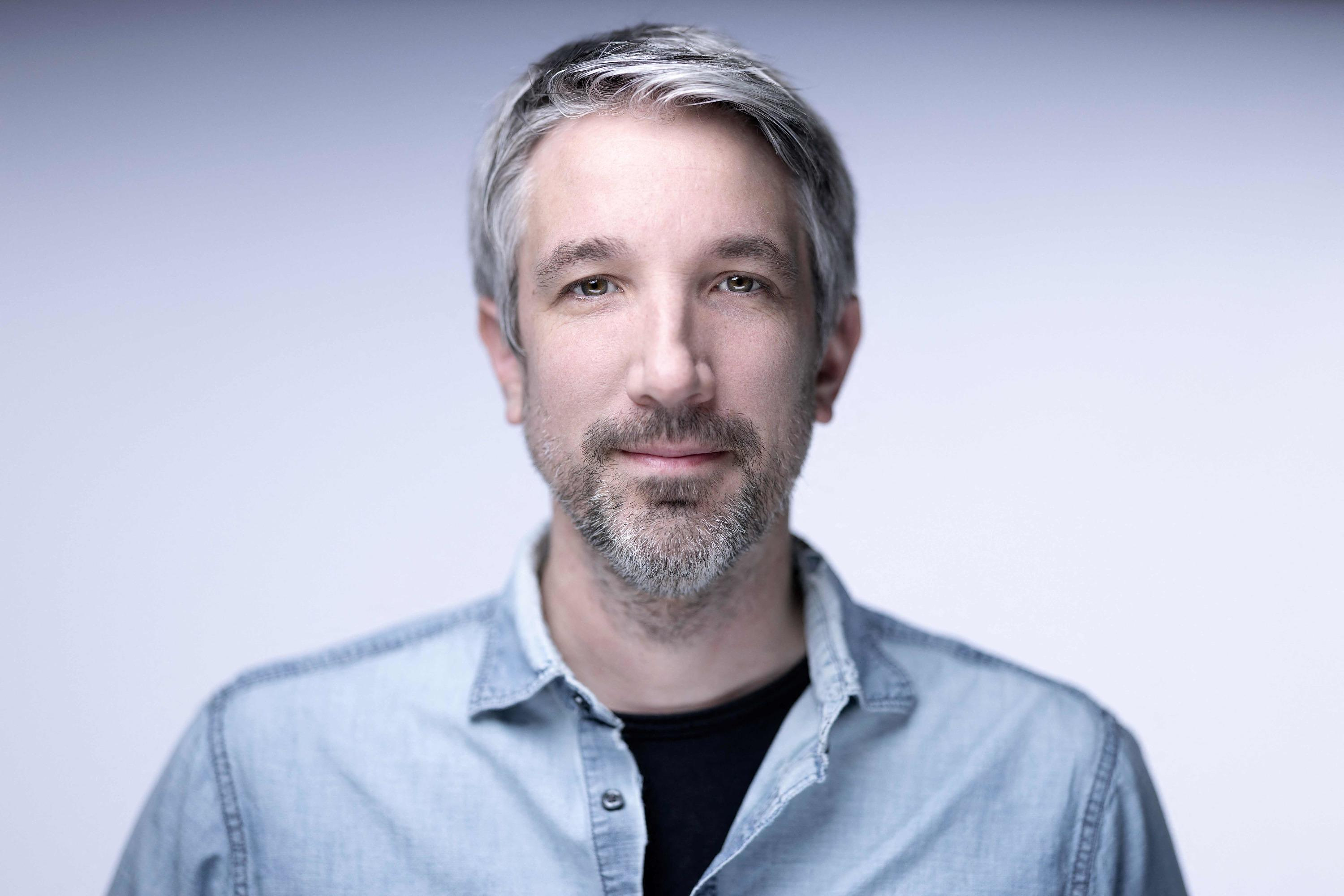Flying is the most climate-damaging type of travel. Many people now feel shame when using airplanes, which has even become its own term with “flight shame”. A broad alliance of research, industry, business and politics wants to make flying more climate-friendly in the future. The current federal government is even aiming for climate-neutral flying as a long-term goal. But there is a long way to go until then.
According to a study from 2020, global air traffic contributes almost 3.5 percent to global warming. The carbon dioxide (CO₂) produced by the combustion of the aviation fuel kerosene accounts for around 1.5 percent. The influence of so-called non-CO₂ effects is noticeably larger with a contribution of 2 percent - and was mostly neglected in previous considerations.
Of the non-CO2 effects, the generation of cirrus clouds from aircraft engine exhaust streams is the most significant factor. It is true that the cirrus clouds reflect part of the sunlight, which therefore does not penetrate to earth. But the clouds also reflect the thermal radiation that emanates from the ground, mainly at night and in the morning hours, so they contribute to global warming. And this effect is the bigger one.
Scientists from the German Aerospace Center (DLR) were involved in the study, which was published in the journal Atmospheric Environment. Markus Fischer, Head of Aviation at DLR, currently sees good opportunities for rapid development towards more climate-friendly aviation: "The aviation crisis resulting from the corona pandemic is now proving to be beneficial to a certain extent," says Fischer. In his opinion, without the sharp decline in air traffic, it would have been much more difficult to initiate the rethinking process necessary for climate protection.
The current federal government is pushing for rapid action and has founded the “working group on climate-neutral aviation”. The member of the Bundestag Anna Christmann (Greens), as the federal government's coordinator for German aerospace, invited to the Federal Ministry for Economic Affairs and Climate Protection in November. The host was also the Parliamentary State Secretary at the Federal Ministry for Digital Affairs and Transport, Oliver Luksic. Representatives came from industry, business and research, from trade unions, environmental and other associations as well as from civil society. "It's important to join forces now and push the development processes forward more quickly," emphasizes Christmann.
One of the working groups set up at the first meeting is on sustainable fuels. Although, in the long term, types of propulsion other than turbines are to be increasingly used to burn kerosene, greenhouse gas emissions must also be reduced in the short term. This can be done by using other sources instead of fossil oil to produce kerosene. One possibility is the "power to liquid" process. Hydrogen is generated with climate-neutral, "green" electricity and synthetic gas is artificially produced with CO₂, which is extracted from industrial exhaust gases or the air; this can then be processed into kerosene.
Biological waste can also be source materials. Carbon is stored in them, which was taken from the air during the growth of plants and animals. If this carbon is released again as CO₂ during combustion, the CO₂ content of the air does not increase – at least when viewed for decades. This is where “Bio to Liquid” and “Waste to Liquid” projects come in (“biowaste to liquid”, “waste to liquid”), in which the nearly hundred-year-old Fischer-Tropsch process is used.
In the "Care-O-Sene" project, which will run until 2025, the Fischer-Tropsch synthesis is to be improved in such a way that climate-neutral kerosene can be produced on a large scale. The project leaders are Dirk Schär, manager at the South African chemical and energy group Sasol, and Tobias Sontheimer, senior researcher at the Helmholtz Center Berlin. "Three aspects determine the project goal: the economics of the processes, the preparation for mass production and the efficiency of the synthesis," explains Sontheimer. The kerosene yield of the Fischer-Tropsch synthesis step is currently around 50 percent: only half of the raw materials used to produce a fuel are contained in the fuel as usable energy. With the development of new catalysts, the efficiency should be increased to more than 80 percent.
Synthesis is further down the process chain for climate-neutral kerosene production. "If we optimize this process, then less energy is needed in the preceding processes," explains Schär. Because even if the energy comes from renewable sources, it is more sustainable and economical to use less energy. The project leaders are confident that the new catalysts will work well. Nevertheless, they are also researching thin-film catalytic processes that could bring further improvements in the long term and lead to a CO₂-neutral circular economy.
In aviation, innovation cycles are usually assumed to be 10 to 20 years. With "Care-O-Sene" there should already be a usable result after three years. "We do many things in parallel, and the production facilities are already being planned," explains Schär. Sontheimer adds: "We have no alternative, we have to act quickly now." The EU Commission wants to promote the market for sustainable aviation fuels or Sustainable Aviation Fuels (SAF) by increasing the admixture of SAF to conventional kerosene by two percent (2025) to 63 percent (2050); however, the figures are still disputed.
The second working group in the climate-neutral aviation working group deals with new technologies in commercial aviation. This doesn't just mean drive technologies, but also the massive reduction in internal energy consumption through aerodynamic measures and lightweight system construction. As with other means of transport, there are essentially three types of propulsion: electric, hydrogen-powered, liquid fuel-powered. The electric drive is only an option for short distances or small aircraft, today's battery technology does not provide more, says DLR board member Fischer. Hybrid electric drives, for example in combination with a hydrogen-powered fuel cell, could possibly also work for medium-sized aircraft.
There are two approaches to hydrogen fuel: electricity generation in fuel cells and direct combustion in engines. However, hydrogen is difficult to transport: it either has to be liquefied at minus 253 degrees or stored at a pressure of up to 700 bar, around 700 times the atmospheric pressure. Climate-friendly kerosene, on the other hand, is easy to transport. That is why there are already considerations to produce it in areas where a particularly large amount of solar and wind energy can be generated. Because for many medium-haul and all long-haul routes, it is not yet clear how kerosene-powered drives could be replaced.
For shorter distances, sustainable aircraft are being worked on around the world - the management consultancy Roland Berger counted 300 corresponding projects in 2021. Aircraft with purely electric propulsion make up 61 percent of the development volume, those with hybrid-electric propulsion 32 percent and those with hydrogen propulsion 7 percent. As an example, MEP Christmann refers to the German start-up Volocopter, which develops electrically powered vertical take-off aircraft and cargo drones, and to H2Fly, which is working on fuel cell technology with the first successful test flights. The big corporations also take development risks. Airbus is working on a hydrogen-powered aircraft that should be ready for the market in 2035.
For DLR Divisional Director Fischer, the research does not end with the drives. Because the non-CO₂ effects have such a major impact on the climate, his scientists are also devoting themselves to optimizing flight routes: "The cirrus clouds only form where it is very cold and at the same time very humid," explains Fischer. These areas are now well defined. If a pilot receives a message in good time, he can fly around the affected airspace in consultation with air traffic control. Since almost 80 percent of cirrus cloud formation from contrails is caused by just ten percent of global air traffic, Fischer is convinced that a significant effect on climate protection can be achieved here.
Flight route optimization is also the main topic of the third working group in the climate-neutral aviation working group. The initiator of the working group, Christmann, also mentions other aspects, especially climate-neutral airports. Because many things are easier to make climate-friendly on the ground than in the air. For example, the green ground power at German airports will make it possible to supply stationary aircraft with energy; so far, the engines often have to run. Entire airports could be redesigned to be climate-friendly, powered by solar power generated between the runways. "The airports are already on the right track," says Christmann.
Many different measures are intended to reduce the CO₂ footprint of flying. In this way, pilots could use the gliding flight more when approaching and less the turbines, Fischer cites another example. The players are not counting on the big technological breakthrough, but on numerous smaller and larger steps towards climate-neutral flying. "Every technology and every measure that is researched has its justification," emphasizes Helmholtz researcher Sontheimer.
"Aha! Ten minutes of everyday knowledge" is WELT's knowledge podcast. Every Tuesday and Thursday we answer everyday questions from the field of science. Subscribe to the podcast on Spotify, Apple Podcasts, Deezer, Amazon Music, among others, or directly via RSS feed.

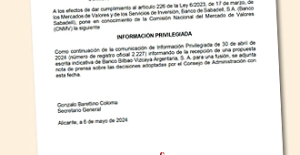 Sabadell rejects the merger with BBVA and will fight to remain alone
Sabadell rejects the merger with BBVA and will fight to remain alone In Germany, the far left wants to cap the price of “doner kebabs”
In Germany, the far left wants to cap the price of “doner kebabs” Israel-Hamas war: Gaza between hope of truce and fear of Israeli offensive in the South
Israel-Hamas war: Gaza between hope of truce and fear of Israeli offensive in the South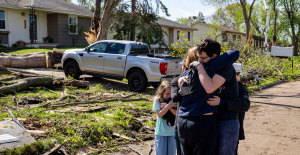 “Mom, Dad, please don’t die”: in the United States, a nine-year-old child saves the lives of his parents injured in a tornado
“Mom, Dad, please don’t die”: in the United States, a nine-year-old child saves the lives of his parents injured in a tornado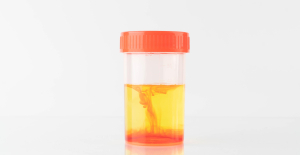 The presence of blood in the urine, a warning sign of bladder cancer
The presence of blood in the urine, a warning sign of bladder cancer A baby whose mother smoked during pregnancy will age more quickly
A baby whose mother smoked during pregnancy will age more quickly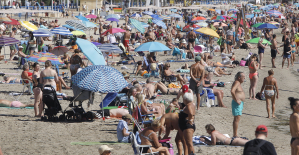 The euro zone economy grows in April at its best pace in almost a year but inflationary pressure increases
The euro zone economy grows in April at its best pace in almost a year but inflationary pressure increases Children born thanks to PMA do not have more cancers than others
Children born thanks to PMA do not have more cancers than others “House of the Dragon”, “Succession”… Max, the new streaming platform from HBO and Discovery, launched in France on June 11
“House of the Dragon”, “Succession”… Max, the new streaming platform from HBO and Discovery, launched in France on June 11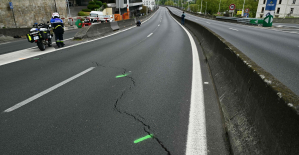 The A13 motorway will finally reopen this Friday, in one direction only
The A13 motorway will finally reopen this Friday, in one direction only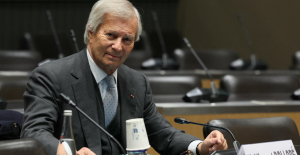 TNT commission of inquiry: tensions between LFI deputies and Macronists before the vote on the report
TNT commission of inquiry: tensions between LFI deputies and Macronists before the vote on the report Apple unveils a new, more efficient iPad range
Apple unveils a new, more efficient iPad range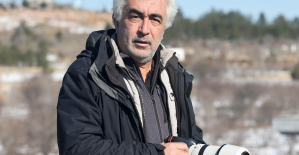 The Gaza War invites itself to the 2024 Pulitzer Prizes
The Gaza War invites itself to the 2024 Pulitzer Prizes Judith Godrèche presents a short film on sexual violence in Cannes
Judith Godrèche presents a short film on sexual violence in Cannes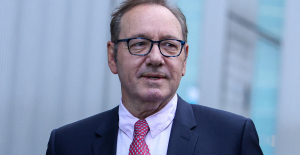 Kevin Spacey: new trial in sight in London for the American actor, for sexual assault
Kevin Spacey: new trial in sight in London for the American actor, for sexual assault Taylor Swift fans make London pub Black Dog their new place of pilgrimage
Taylor Swift fans make London pub Black Dog their new place of pilgrimage Omoda 7, another Chinese car that could be manufactured in Spain
Omoda 7, another Chinese car that could be manufactured in Spain BYD chooses CA Auto Bank as financial partner in Spain
BYD chooses CA Auto Bank as financial partner in Spain Tesla and Baidu sign key agreement to boost development of autonomous driving
Tesla and Baidu sign key agreement to boost development of autonomous driving Skoda Kodiaq 2024: a 'beast' plug-in hybrid SUV
Skoda Kodiaq 2024: a 'beast' plug-in hybrid SUV The home mortgage firm rises 3.8% in February and the average interest moderates to 3.33%
The home mortgage firm rises 3.8% in February and the average interest moderates to 3.33% This is how housing prices have changed in Spain in the last decade
This is how housing prices have changed in Spain in the last decade The home mortgage firm drops 10% in January and interest soars to 3.46%
The home mortgage firm drops 10% in January and interest soars to 3.46% The jewel of the Rocío de Nagüeles urbanization: a dream villa in Marbella
The jewel of the Rocío de Nagüeles urbanization: a dream villa in Marbella Institutions: senators want to restore the accumulation of mandates and put an end to the automatic presence of ex-presidents on the Constitutional Council
Institutions: senators want to restore the accumulation of mandates and put an end to the automatic presence of ex-presidents on the Constitutional Council Europeans: David Lisnard expresses his “essential and vital” support for François-Xavier Bellamy
Europeans: David Lisnard expresses his “essential and vital” support for François-Xavier Bellamy Facing Jordan Bardella, the popularity match turns to Gabriel Attal’s advantage
Facing Jordan Bardella, the popularity match turns to Gabriel Attal’s advantage Europeans: a senior official on the National Rally list
Europeans: a senior official on the National Rally list These French cities that will boycott the World Cup in Qatar
These French cities that will boycott the World Cup in Qatar “The future is for us”: “disappointed” and “proud” at the same time, Al-Khelaïfi sees the glass half full after the elimination of PSG
“The future is for us”: “disappointed” and “proud” at the same time, Al-Khelaïfi sees the glass half full after the elimination of PSG PSG: “Since January, these have not been my best matches,” agrees Zaire-Emery, who promises to “come back stronger”
PSG: “Since January, these have not been my best matches,” agrees Zaire-Emery, who promises to “come back stronger”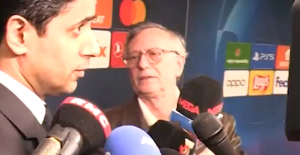 “What is this question, honestly?” : Nasser Al-Khelaïfi (very) annoyed after PSG-Dortmund
“What is this question, honestly?” : Nasser Al-Khelaïfi (very) annoyed after PSG-Dortmund “I am the guy who has to score the goals”: Mbappé does not hide and assumes responsibility after PSG’s exit
“I am the guy who has to score the goals”: Mbappé does not hide and assumes responsibility after PSG’s exit






